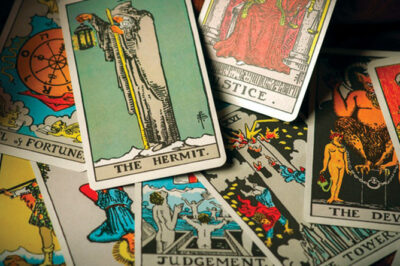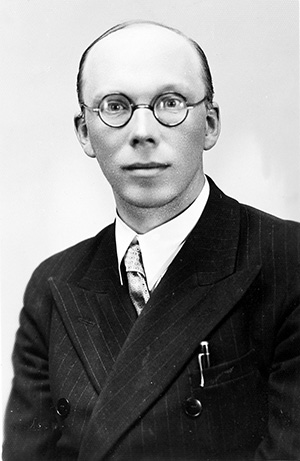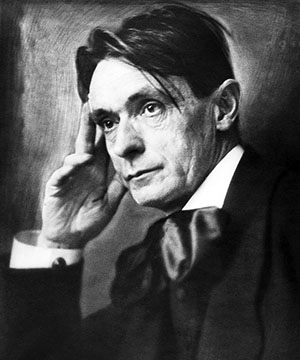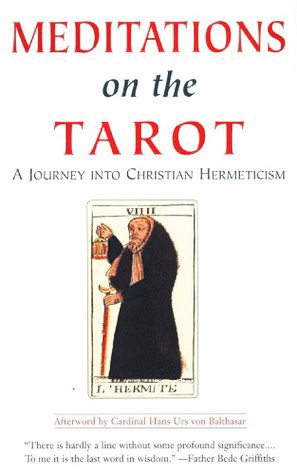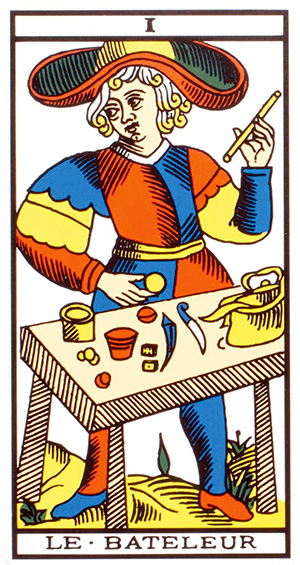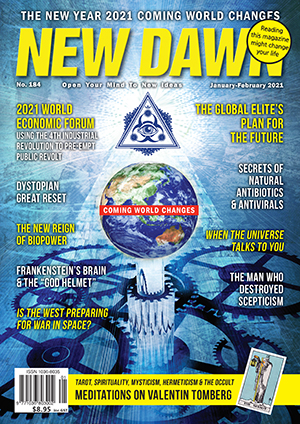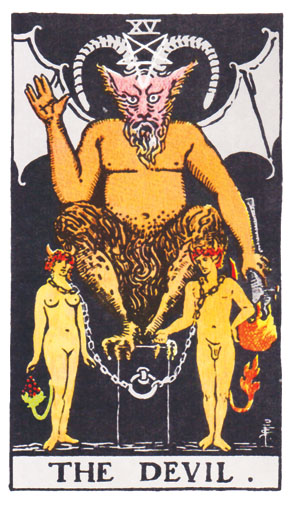From New Dawn 184 (Jan-Feb 2021)
The twentieth-century esoteric philosopher Valentin Tomberg was born in 1900 in St. Petersburg to a Russian father and an Estonian mother. Little is known about his early life; indeed, Tomberg seems to have gone out of his way to draw as little attention to his life as possible. As his editor and translator Robert Powell remarked, Tomberg himself “attached no significance whatever to the biographical details concerning him.”1 In fact, the main reason he is known today is that he is recognised as the author of a remarkable book, Meditations on the Tarot, that was and still is published anonymously. Ironically, the very steps Tomberg took to obscure his identity led to a great deal of interest in it.
What we do know about him is that by his late teens he had become deeply interested in Theosophy and the spiritual philosophy of Vladimir Soloviev, as well as in the more mystical aspects of the Russian Orthodox Church.
Russia in the early twentieth century was a remarkable time for a young man with spiritual interests to come of age. Soloviev, Russia’s first philosopher, who has found a new reader in Vladimir Putin, was one of the major philosophical and religious figures of a period in Russian history known as the Silver Age. This stretched from around 1890 to 1917, the year of the Bolshevik revolution, a historical eruption that devastated Tomberg’s family, as it did many others.
As I show in my book The Return of Holy Russia, the Silver Age was a time of deep interest in and almost obsession with religion, spirituality, mysticism and the occult, and it produced a powerful surge of creativity in literature, music, philosophy, and art. For a young man of Tomberg’s inclinations, having his spiritual awakening at this time no doubt made an impression on him that remained for the rest of his life.
A New Cultural Epoch
Although Madame Blavatsky, one of the founders of the Theosophical Society, was Russian, her focus on Eastern sources of wisdom, continued by her successors, alienated many Russians, who were deeply Christian. Tomberg was one of them, and soon after joining the Theosophical Society he left, turning his allegiance to the work of Rudolf Steiner.
Steiner was immensely popular in Russia in the years leading up to the revolution, his highly Christianised version of Theosophy – which he would soon rechristen Anthroposophy – appealing to the generation of “God Seekers” that characterised the Silver Age. As I show in my book, both Steiner and the God Seekers had great hopes for a new “cultural epoch” to emerge from Russia at this time. In the view of Steiner and others, including Soloviev, Russia was charged with the mission of uniting the scientific knowledge of the west with the mystic intuition of the east, their integration giving birth, it was hoped, to a new creative consciousness that would transcend the limits of its parents.
Sadly, this marriage between east and west was precluded by the revolution and, as we know, something radically different emerged from Russia. Lenin’s adamantly anti-spiritual ideology put paid to any notion of a new “cultural epoch,” and the chaos of the revolution cost Tomberg dearly. His family’s fortunes were lost, as were his father – who had a position in the czar’s government – mother, and brother. One story has it that during the chaos, Tomberg’s mother ventured into the streets. She never returned, and Tomberg later found her and their dog, both shot dead and tied to a tree. Like many who escaped the terror, Tomberg was unquestioningly anti-communist for the rest of his life.
Upstart Anthroposophist
In 1920, Tomberg made his way to Tallinn, Estonia. From there, he wrote several letters to Rudolf Steiner, asking if he could become his student. His letters went unanswered; it is unclear if Steiner ever read them or simply ignored them. Steiner’s silence evidently did not put Tomberg off Anthroposophy; in 1925, the year of Steiner’s death, Tomberg joined the Estonian branch of the Anthroposophical Society, eventually becoming its secretary-general. But friction soon appeared between Tomberg and the society; he was too individual a mind to remain merely a good anthroposophist.
Throughout the 1930s he wrote many articles for Anthroposophical journals, on a variety of subjects; many had to do with what Steiner called “the return of Christ in the etheric,” and the “mission” of different nationalities. Tomberg claimed that these articles were informed by an experience he had in 1931 when he was put in contact with the “angelic world.” This, no doubt, set him further apart from his fellows, and eventually he was asked to leave the society. At around this time he had also tried to find a place for himself at the Goetheanum, the society’s headquarters in Switzerland, but was denied this by Steiner’s widow.
In 1938, Tomberg moved to Holland; after the Nazis invaded in 1940, he joined the resistance. His relations with the Anthroposophical Society in Holland ran into the same problems as before. It seems the essence of the trouble was that Tomberg’s esotericism was even more Christocentric than Steiner’s; if you know Steiner’s work, you’ll know this is no easy feat. After the war, Tomberg moved to Cologne where he earned a degree in jurisprudence and became deeply engaged with Catholicism. It is unclear if he actually converted, but he become alienated from the Russian Orthodox Church because its leadership had seemed sympathetic to Hitler.
In 1948, Tomberg moved again, this time to England, where friends found him work with the BBC as a translator; he was a polyglot and would later monitor Soviet broadcasts. In 1960 he retired, devoting himself to study and writing. He died in 1973, from a heart attack while on holiday with his wife and their son in Majorca. Aside from his early essays, practically all his work appeared only after his death, and one work in particular was designed by Tomberg himself to appear in precisely that way.
The work in question is Tomberg’s magnum opus, Meditations on the Tarot, subtitled “A Journey into Christian Hermeticism.” This was first published in French – the language in which it was written – in 1980, seven years after Tomberg’s death and nearly twice that long after the work’s completion, which Tomberg noted as 21 May 1967, the “Festival of the Holy Trinity.” German and English translations soon followed, but it was not until 2002 that a full English edition appeared through a mainstream American publisher, bringing Tomberg’s work to a wider reading public, albeit still a marginal one with a taste for the arcane and esoteric. It was also at this point that it became known Tomberg was the author of this work. And although by now his authorship is well known, as mentioned the book is still published anonymously, as was Tomberg’s wish.
Letters From Beyond the Grave
Meditations on the Tarot consists of twenty-two “letters to the Unknown Friend,” sent “from beyond the grave,” dispatched, that is, well after Tomberg’s death. The reason for these tardy communiques is that Tomberg wanted to mute any personal element in them, to have the reader of these letters focus on their message, not on the messenger. Tomberg himself insists that he has “said more about himself” in these letters than he “would have been able to in any other way.”2 The unknown friend to whom Tomberg is writing is the reader, and Tomberg’s letters are long, discursive, deeply pondered and occasionally meandering essays on the twenty-two trumps of the Tarot, filled with references to Steiner, Teilhard de Chardin, Bergson, Nietzsche, Gurdjieff, the Corpus Hermeticum, Catholic dogma, and many other writers, philosophers, mystics, and saints. (I should point out that the Meditations run to more than 600 pages.) Tomberg’s letters do not touch upon the divinatory character of the Tarot. Nor does he relate the trumps to the usual astrological or cabbalistic correspondences, as do most books on the Tarot, although both Cabbala and astrology make appearances.3 Instead, the Meditations are illuminating, insightful, and not infrequently baffling excursions into the meaning of the symbols presented in the trumps, which Tomberg tells his unknown friends are arcana.
Arcana
Arcana, Tomberg tells us, are more than secrets, which are merely facts that are hidden from us, or allegories, which are figurative representations of abstract ideas. Arcana are “authentic symbols,” “magic, mental, psychic, and moral operations” that can awaken “new notions, ideas, sentiments and aspirations,” and which require more than an intellectual understanding for their power to be felt.4
One way of recognising authentic symbols, and of differentiating them from mere signs, Tomberg tells us, is that they have the power to “conceal and reveal their sense at one and the same time according to the depth of meditation” one reaches in their contemplation.5 A sign is nothing more than an indicator of what it points to. An arrow pointing to a door shows you the way out, but it does not share in you taking it. A symbol participates in the reality it presents, and its meaning, when grasped, should have an almost visceral effect on us. That is, it should affect us in such a way that it effects a change in our consciousness, our awareness, adding not only an intellectual knowledge but offering an existential encounter with hitherto unknown dimensions of Being. It introduces us to a bit of reality of which we were unaware.
This “transformational” power of symbols lead Tomberg to speak of the trumps as “enzymes” that enable us to be “fruitful in a given spiritual domain.” The trumps “ferment” the knowledge necessary for spiritual experience. This is why Tomberg speaks of them as “spiritual exercises,” whose aim is “to awaken from sleep… deeper layers of consciousness.”6 They are definite encounters with esoteric realities, through which we, the unknown friends, are changed.
In this way, the trumps are similar to great works of art. According to Tomberg, the symbols of the Tarot should have the same effect on us as the “archaic torso of Apollo” had on the poet Rilke when he saw it while living in Paris. In its presence, Rilke knew that he “must change his life.”7 A true encounter with the Tarot’s symbolism, Tomberg tells us, should make us feel the same. His aim is to get us to think Hermetically, to allow the rich symbolism of the trumps to reach into our imagination and trigger our faculty for seeing connections between things which we would otherwise ignore. For Tomberg, the essence of Hermeticism is the ability to perceive “the totality of things,” “the One, the All,” as the ancient alchemists called it, the deep, underlying unity at the heart of the multiplicity of Being.
The French Connection
I should point out that Tomberg is writing in the French tradition of the Tarot – he bases his letters on the Tarot de Marseilles – and that this connection brings in the central theme of the book: to show how Roman Catholicism is an indubitable repository of Hermetic wisdom. Hence the subtitle, “A Journey into Christian Hermeticism.” Understandably, this may be sufficient reason for some unknown friends to forgo that journey. Yet we need not accept Tomberg’s thesis in order to profit from his book.

I can respect the high regard Tomberg has for Catholicism, without agreeing with him that “the more one advances on the way of free research… the more one approaches the Church.”8 After much spiritual searching, the author of these meditations found a home in the Catholic church, but that does not mean that for us to learn from him we must take up residency there too. What strikes me as most important about the Meditations is not the arguments Tomberg makes for, say, the Ten Commandments as instructions in Hermetic philosophy or his belief that the fundamental virtues of the Christian faith – obedience, poverty and chastity – are the sine qua non of any esoteric pursuit, ingenious and thought-provoking as they are. We can embrace these dicta, take them with as many grains of salt as needed, or simply reject them. What strikes me as important about Tomberg’s Meditations for the non-Christian reader is the way Tomberg approaches the Tarot, his understanding of what we can call a Hermetic “way of knowledge.”
Christ and Hermes
Having said this, a look at history shows that Christ and Hermes are not such strange bedfellows as we may think. For a time during the Renaissance, Hermes Trismegistus, the legendary founder of the tradition which bears his name, was seen as a figure of equal importance with Christ, and vigorous attempts were made to incorporate the Hermetic teachings, found in the Corpus Hermeticum, into Catholic dogma.9 In France there is a long tradition of a kind of “Catholic occultism,” reaching back to the nineteenth-century French mage Eliphas Levi, and leading on to characters like the eccentric Saint-Yves d’Alveydre and his disciple Gérard Encausse, who wrote under the pseudonym Papus; all three turn up in the Meditations. It is also true that there is a long tradition of literature on the Tarot in French. Indeed, it was Levi himself who first hit on the idea of linking the twenty-two trumps with the twenty-two “paths” on the Cabbalistic Tree of Life, a correspondence that is at the heart of practically all modern magic.
Hermetic Syncretism
This linkage has subsequently been discredited, and most modern historians of the Tarot accept that there is no historical connection between the Tarot and the Cabbala.10 Nor, for that matter, does there seem to be one with Egypt, which many occultists regarded as the Tarot’s source, seeing it as the so-called “Book of Thoth,” the Egyptian god of magic with whom Hermes Trismegistus is associated.
Yet for all his historical inaccuracy, Levi’s inspired howler has proved remarkably effective for the many occultists who have worked with his ideas. These include the members of the Hermetic Order of the Golden Dawn and its most notorious associate, Aleister Crowley, as well as their many epigone. This seems to suggest that purists, who eschew such “romantic” notions as Levi’s and reject much that has accreted around the Tarot as nonsense, ignore the syncretic, synthesising character of Hermeticism. This was with it from the start, ages ago, when Thoth met the Greek god Hermes in ancient Alexandria, their fusion creating the “thrice great” one. This syncretic approach continued during the Renaissance when figures like Pico della Mirandola and others developed the notion of a “perennial philosophy,” which allowed for a Christian Cabbala – “culturally appropriating” a radically Jewish tradition – and, as mentioned, even a Christian Hermeticism. In this light, Levi seems merely to have done what Hermetic thinkers had been doing all along.
Analogy
Although Tomberg is aware of the historical appearance of the Tarot in the late Middle Ages – he does argue, though, for a kind of “archetypal” link to an Egyptian source; Jung makes many appearances throughout the book – a similar syncretic approach is taken in his Meditations. This makes perfect sense. For Tomberg, Hermeticism itself is a synthesis of magic, gnosis, mysticism, and philosophy, and its aim is not to supplant science or to uncover new facts, but to perceive the facts we already possess from a different perspective, and to infuse them with an additional depth, the kind of depth we discover through our encounter with the arcana of the Tarot.
For Tomberg, analogy is the fundamental mode of acquiring knowledge in the Hermetic tradition, which proceeds through a process of synthesising the known and the unknown. The “open recognition of the relationship of all things and beings has engendered an exactly corresponding method of knowledge,” he writes.11 That method is analogy, through which the “sympathy of all things” becomes apparent, not as a concept, or an idea or belief, but through a perception of it “in action” as it were, through the “fermenting” effect of the symbolic “enzymes” produced by our meditations on the trumps.12
This transformative effect is perhaps best seen in the Magician, the trump that Tomberg says is “the key to all the other Major Arcana.”13 By understanding and performing the “spiritual exercise” the Magician presents, Tomberg tells us that we will be able to work our way through to the knowledge and experience contained in the arcana that follow. As I do not have space to more than touch on some of the insights that the Magician presents, I trust the unknown friends that read this article will be encouraged to accept Tomberg’s invitation to journey with him and perform some of these spiritual exercises themselves.
Concentration Without Effort
The spiritual exercise of the Magician, Tomberg tells us, is aimed at developing two essential abilities, necessary for any successful Hermetic work. They are “concentration without effort” and “turning work into play.”14
“Concentration without effort” – what he also calls “active relaxation” – is achieved, Tomberg tells us, when we can direct our attention to whatever occupies us, without the constant chatter of the care-ridden ego leading our minds elsewhere. When we can achieve an inner silence, free from the distractions of thought – the basic requirement of any inner work – the kind of concentration that would usually cost strenuous efforts can be reached “effortlessly.”
As an example, Tomberg suggests a tightrope walker – an aptly symbolic choice. He is certainly concentrating on his actions; if he wasn’t, he would fall. But Tomberg asks: “Do you believe that his thought and his imagination are occupied with what he is doing?”15 The tightrope walker does not “calculate” or “plan” his next step because he has shifted his consciousness from his head – the worrying ego – to what Tomberg calls his “rhythmic system,” which possesses an intelligence of its own, the “intelligence of the heart” I have written about elsewhere.16
This shift from head to heart, Tomberg says, is symbolised by the lemniscate, or horizontal 8, that is formed by the Magician’s hat. This is the symbol of infinity, but, Tomberg tells us, it is also the symbol of “eternal rhythm,” the natural “flow” – as the psychologist Mihaly Csikszentmihalyi calls it – that our ever-worrying mind interferes with. When we have quieted our inner monologue, we can enter this flow. If we think of the “concentration without effort” we achieve when we are deeply “into” a book we are reading, we can get an idea of what Tomberg means. Our concentration is so focused we forget our surroundings. Yet it requires no effort at all; in fact, we enjoy it.
This is the arcanum of “transforming work into play,” which is a result of achieving this kind of concentration.17 When we enter the “zone of perpetual silence,” we can not only concentrate our consciousness “effortlessly;” any task we may be obliged to perform can become a source of delight.18 Because we can draw from a “secret and intimate respiration,” he “who finds silence in the solitude of concentration without effort, is never alone.”19
He or she is never alone, because the Magician who has achieved this has “attained harmony and equilibrium between the spontaneity of the unconscious… and the deliberate action of the conscious,” the “I” or ego.20 The Magician symbolises a state that is the “synthesis of the conscious and the unconscious,” or, as I have suggested, between our left and right brains.21 Tomberg says this is equivalent to what Jung speaks of as “individuation,” which can result in what Marie-Louise von Franz calls “conscious spontaneity,” a paradoxical state in which one is “consciously active and still spontaneous,” in which the conscious and unconscious minds have an equal say.22
Tulpas and Egregores
This brief account of Tomberg’s interpretation of the Magician should give the reader an idea of what he may find if he dips into the Meditations. One other trump that I should at least mention is the Devil, the theme of Letter XV. This trump, Tomberg tells us, introduces us to the secrets and dangers of what he calls “counter-inspiration.” It presents a warning about the “intoxication” we experience when we become aware of our own power to “engender demons.”23 The demon before whom the man and the woman stand enchained, Tomberg tells us, is one of their own making. It is a result of their misuse of the powers of will and imagination, the Magician’s tools in trade.
The specific demons Tomberg speaks of are tulpas and egregores. Tulpas are part of the esoteric psychology of Tibetan Buddhism. They are thought-forms created by a single individual, through prolonged efforts of visualisation. Eventually, after much mental work, the tulpa can take on a life of its own, much to the dismay of its creator. As I point out in my book, Dark Star Rising: Magick and Power in the Age of Trump, both the traveller Alexandra David-Neel and the occultist Dion Fortune had experiences creating tulpas, and both write of their difficulties in regaining control of and eventually dissolving them.24
An egregore – which means “watcher” in ancient Greek – is a thought-form brought into existence by a group. As Tomberg tells us, there are no “good” egregores, only “evil” ones.25 They can be “engendered by the collective will and imagination of nations,” Tomberg writes, but the aims of an egregore are always selfish, centred exclusively on gaining power and growing stronger at the expense of its creators. Once brought into existence, an egregore is harder to “dissolve” than a tulpa, given that it is the work of a group. This can be a cabal of occultists, or a political party – hence their inclusion in Dark Star Rising, which looks at the resurgence of a kind of “occult politics” in recent times. This seems to have raised its head during the run-up to the 2016 US presidential election and has remained on the scene since. It has also been at work in Russia.
Should we take tulpas and egregores seriously? A good question. Tomberg certainly did, and as he tells us, the Devil is one trump we should clearly keep an eye on.
Footnotes
1. Robert Powell, introduction to Valentin Tomberg, Lazarus Come Forth! (Great Barrington, VT: Inner Traditions, 2006) p. ix.
2. Anonymous, Meditations on the Tarot (New York: Tarcher/Penguin, 2002) p. ix.
3. The question of where and with whom Tomberg studied the Tarot is an interesting one. He speaks of a work, The Sacred Book of Thoth – The Major Arcana of the Tarot, by an “engineer” named Schmakov, published in 1916 which was “twice as large as Oswald Wirth’s” book on the Tarot (p. 590). He also says he read Ouspensky’s The Symbolism of the Tarot (1917). He tells his unknown friends that after the Bolshevik revolution, and presumably before going to Estonia, he became friends with members of a group of esoteric students that had been led by a mathematics professor, Gregory Ottonovitch Mebes. Mebes was the author of a book, The Course of Encyclopaedia of Occultism that is said to have influenced Tomberg. In 1926, Mebes was sent to a gulag, where he died. The group had been dispersed by the revolution, but the members he met “transmitted all they knew and recounted everything concerning the work of their group” to Tomberg. (Ibid.) The group seemed to have studied the Tarot in the traditional French way, relating it to Cabala, magic, astrology, etc. Tomberg says that through the “forty-five years” of his own study, he has “surpassed” what he learned from them and that throughout the Letters – aside for one exception – he does not draw on it. Another esoteric thinker who wrote about the Tarot, Mouni Sadhu, is said, like Tomberg, to have been in contact with members of this group, and influenced by Mebes’ book. Some have seen similarities between Sadhu’s The Tarot (1962) and the Meditations, which the link with Mebes may explain.
4. Ibid. p.4.
5. Ibid.
6. Ibid. p. 91
7. poets.org/poem/archaic-torso-apollo
8. Ibid. p. 283
9. See my book The Quest for Hermes Trismegistus (Edinburgh: Floris Books, 2011) pp. 154-56.
10. Robert M. Place, The Tarot (New York: Tarcher/Penguin, 2005) p. 73.
11. Anonymous p. 12.
12. Ibid. p. 4.
13. Ibid. p. 3.
14. Ibid. p. 8.
15. Ibid. p. 9.
16. Gary Lachman, Lost Knowledge of the Imagination (Edinburgh: Floris Books, 2017) pp. 52-53.
17. Anonymous p. 11. This is an arcana evidently known to Mark Twain, who makes good use of it in Tom Sawyer. There the wily Tom convinces his friends to paint a fence because he pretends to be enjoying it. Yet the trick is really on Tom because his friends actually do enjoy it; they have transformed work into play, by telling themselves it is play.
18. See my article “Getting Beyond the Robot” in New Dawn 182 (Sept–Oct 2020).
19. Ibid.
20. Ibid. p. 20.
21. Gary Lachman, The Secret Teachers of the Western World (New York: Tarcher/Penguin, 2015). In this book I argue that such a harmony is at the heart of the western esoteric tradition.
22. Marie-Louise von Franz, Alchemy (Toronto: Inner City Books, 1980) p. 238.
23. Anonymous p. 401.
24. Gary Lachman, Dark Star Rising: Magick and Power in the Age of Trump (New York: Tarcher Perigee, 2018) pp. 90-92.
25. Ibid. pp. 419-20.
© New Dawn Magazine and the respective author.
For our reproduction notice, click here.

